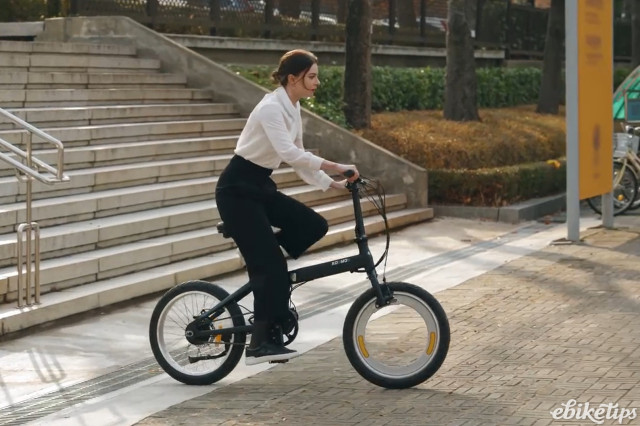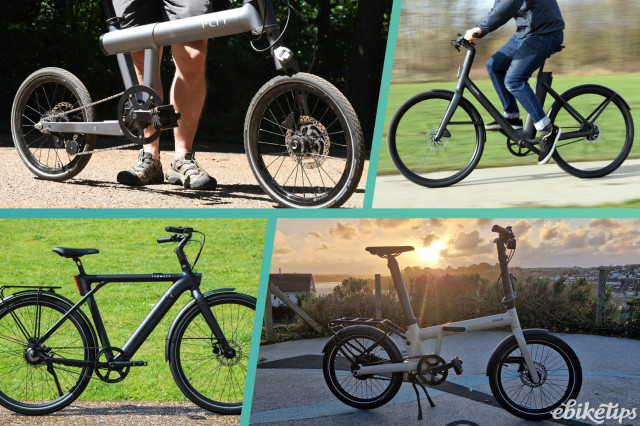Review: Bosch Active Line Plus motor

Overview
- Really quiet
- Lots of power on tap
- Natural-feeling assistance
- Nothing really
The Bosch Active Line Plus motor feels like a big step forward from the motor it replaces, the Active Line. It’s much quieter – to the point of being functionally silent – and it’s more powerful too, with a better feel in use. It’s lighter too. It’s basically better in every way.
The Bosch Active Line motor has been a mainstay of the city bike scene for a number of years. One of a range of three Bosch motors that use similar geared internals and a small drive ring, it put out 43Nm of torque and has been used on countless bikes to great effect. Things move on, though, and the e-bike market is a constantly developing one. Last year Bosch announced it was replacing the Active Line motor with not one but two successors, the 40Nm Active Line Cruise and this, the 50Nm Active Line Plus. “Both these drive systems contain a number of new technical developments and thanks to their smaller size they can be elegantly integrated into modern pedelec frames”, said Bosch at the time. The new Active Line will have particular appeal for inner-city users and occasional eBikers, while the versatile Active Line Plus will attract convenience-conscious riders who also use their bikes for countryside. With these two product lines the eBiker benefits not only from a natural riding experience but also from the fact that the motor is both light and quiet.”
The new motors use a completely redesigned drive system. The original active line motor was geared between the cranks and the drive ring, and used a small front ring. The new motors are direct drive: the cranks and the drive ring are connected and rotate at the same speed, much like a normal bike.
That has a couple of knock-on effects. Firstly, it means that when the motor is turned off there’s no loss of efficiency through the gearing in the motor, so it feels more natural and less vague to pedal when the motor’s not on. Realistically most people who have a city e-bike won’t spend much time riding it with the motor off, but it’s a nicer unit to pedal if you’re above the 25km/h assistance limit, or you’ve run out of juice in the battery.
The main thing that’s changed though is the amount of noise the motor makes. Which is basically none. The old Active Line motor wasn’t especially noisy, and nor was it especially quiet; you could hear it doing its job as you cruised along, especially at low speeds uphill in high assistance modes. Now the Active Line Plus motor is essentially functionally silent for 90% of riding. It’s not that it doesn’t make any noise, but the noise it makes is at a lower level than even the tyres on the road a lot of the time. If you’re riding in town you won’t hear it at all above the ambient city volume. If you’re cruising on smooth tarmac in the countryside you can make it out, but even then it’s a background noise. It’s very impressive, quieter even than the Brose motor which has been the benchmark for years in terms of noise.
It wouldn’t be any use if the motor was silent and ran out of puff at the first sign of a gradient, but with a claimed 50Nm of torque on tap the Active Line Plus is more than capable of handling pretty much anything that the type of bike it’s fitted to is likely to encounter. I tested the motor on a Raleigh Motus Grand Tour and I found that Bath’s many and varied hills were generally no problem. In turbo mode with a big rider on board (I’m 92kg) the motor was happy on slopes well into the teens, and only really got overwhelmed when the gradient reached 20% or above, which is unlikely to be a gradient most riders will be pointing a city bike at.
The feel of the motor has changed, too, and for the better. The separation between the cranks and the drive ring on the old unit did give the Active Line a bit of a detached feel at times, and it didn’t feel particularly responsive to the amount of rider input, especially in the higher modes: it was just a case of turning the pedals and the motor would do its thing. The Active Line Plus motor feels more like it’s in tune with the rider, giving its assistance based on what you’re doing. Bosch said it was aiming for a natural rider experience and that’s what it has delivered: the new motor is a big improvement there.
The weight of the Active Line Plus motor is a claimed 3.2kg; that’s lighter than the motor it replaces with more power on tap. It’s not the lightest out there – Yamaha’s PW-X motor puts out 80Nm of torque from a 2.9kg unit – but things are going in the right direction, and improvements in battery technology mean that a full Bosch system is getting on for 1kg lighter than it was a couple of years ago.
Overall there’s a great deal to like about the new Active Line Plus motor. It has plenty of power for most people’s city riding, it’s very quiet and has a natural feel. Some weight has been shaved and you still get Bosch’s excellent system components and comprehensive service network. If you’re looking for a new city bike, this motor is definitely one to try.
1 comments
Hi Thanks for an excellent review of this Bosch motor and for the very informative site in general. My intention was to buy a Cube touring bike with a CX motor. However when I tested it on the flat I was surprised how noisy it was. In contrast the Active line plus was as you say much quieter and I felt a greatly smoother ride. My problem is that I live in a particularly hilly part of Wales and have not been able to test the Active line plus on a proper gradient. I'm intrigued why so many of the bike firms put the CX on touring bikes if the Active line plus is capable of non MTB slopes. In short would you be happy with a touring bike with Active line plus with 11/46 gearing if you lived in a hilly region? I weigh 12.5 stone 6ft 1 and reasonably fit. I would really appreciate your opinion as you have had the opportunity to ride both motors on conditions not dissimilar to those around my home. Regards Alan






